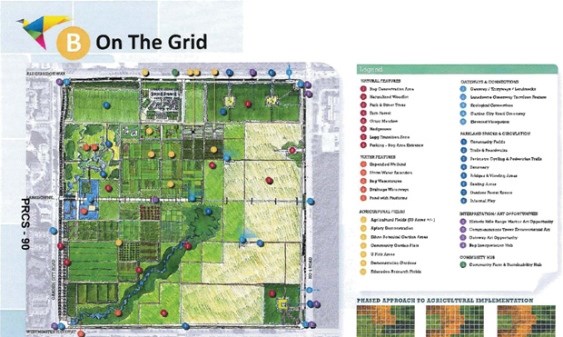One of Richmond’s most contentious swaths of Agricultural Land Reserve land – the Garden City Lands – is going back to another drawing board in the same week the provincial government announced more relaxed rules for ALR land development in northern B.C.
Following a parks and recreation committee meeting on Tuesday the Garden City Lands Legacy Landscape Plan was directed by city councillors to the Agricultural Advisory Committee and the Advisory Committee on the Environment for review. Several issues were raised at the meeting:
- Members of the Garden City Lands Coalition are concerned about the hydrology of the land as it relates to a unique sphagnum moss bog, vital to ecological diversity, which has very specific water requirements.
- De Whalen of the Richmond Poverty Response Committee noted all the lands should conform to passive recreation and not have organized sports as they exclude low-income families.
- Coun. Bill McNulty believes the bog and grassland areas are too large.
- Kwantlen Polytechnic University continued to express interest in having 20 acres of the 136-acre park and ecological reserve dedicated to its sustainable agriculture program.
- Richmond Mayor Malcolm Brodie wants the lands to be reconfigured north-south and east-west instead of diagonally.
On Thursday B.C. Minister of Agriculture Pat Pimm announced the Agricultural Land Commission would begin administering two separate zones of the ALR with six regional panels.
Zone 1 includes the Vancouver Island, South Coast and Okanagan panel regions while Zone 2 includes the Kootenay, Interior and North panel regions.
Pimm said the ALC will remain independent and the priority remains in protecting farmland.
However, Zone 2 will become a more flexible zone to consider “non-agricultural home-based businesses” aimed at increasing economic opportunities for farmers.
Also, official community plans (OCP) will require municipalities to now engage the ALC earlier in the planning process.
Pimm will also mandate service standards for the ALC.
“It’s not good but it could be worse,” said Coun. Harold Steves, a proponent of farming.
Steves said the changes will remain mostly status quo for Richmond, however, regional panels are subject to local lobbying by developers.
The changes also don’t address what he says is the biggest threat to Richmond farms – Port Metro Vancouver.
“We’re still in the same situation. Our threat wasn’t a weak ALC, it’s the port,” said Steves.
Pimm said northern land has less agricultural value, a big reason for making land use on ALR land more flexible. Steves and food security activists said that’s a myth.
“This is potentially disastrous: It could leave just 0.5 per cent of B.C’s land base with the present standard of farmland protection,” wrote Brent Mansfield, co-chair of the BC Food Systems Network in a news release.



